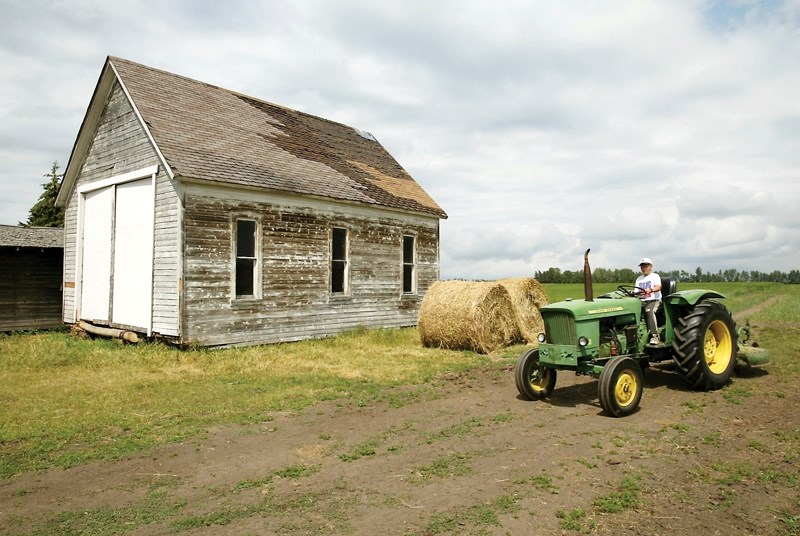Members of the Burnt Lake Community Association are the first to jump on Red Deer County's new historical marker policy.Approved in August, it allows applicants wanting to designate a site with heritage significance to seek support from the county, including a $500 grant towards historical signage. The policy is an extension of Red Deer County's acclaimed heritage management program.Kay Johanson, director of the Burnt Lake community association, wants Stockholm, about eight kilometres west of Red Deer on Highway 596, to receive this designation.ìThere was a trail going from Red Deer to the West Country,î Johanson explained of the area's history. ìAnd it became the Burnt Lake Trail and Stockholm was situated on the Burnt Lake Trail. However, in 1912, they realized the railroad would go north through Sylvan Lake and the town just folded basically.îStockholm is one of several communities that became a ghost town after getting bypassed during the construction of the Alberta Central Railway, explained Michael Dawe, curator of history for Red Deer Museum and Art Gallery.ìThat's a story across Western Canada,î he said of towns either moving closer to the railroad or dying if they were too far away.ìPeople had been anticipating for a number of years where the railroad would go and where they created Stockholm seemed like a likely site because you had Burnt Lake, which was a large shallow lake to the north, and people thought that the railroad would likely go south of the lake,î Dawe said.Stockholm was surveyed in 1903 by the Red Deer Land Company. Several houses were built on the townsite as well as a cheese factory, store, post office, school, stopping house, a blacksmith shop and three churches.ìWhat happened was when they built the railroad they built a big drainage ditch and they drained a lot of the lake down, because it was quite shallow, and built the railroad across a lot of the lake bed and built the townsite up at Sylvan Lake, which made a lot more sense actually because Sylvan is a recreational lake, a resort and more of a hub.îJohanson, who lives in the area, said pretty much all of the buildings are gone.ìThere was a blacksmith shop and churches, a lot of them were moved to different farms in the area. They did a lot of moving.îThere are only a couple of buildings left in the area today. One family lives in the townsite's old Seventh Day Adventist Church. Another church was moved a few hundred metres away across Highway 596 to the farm of Lorie and Melvin Johanson, where it's used as a garage.The old schoolhouse, built in 1934, years after the town folded, still remains and is now the Burnt Lake Community Hall.ìI feel like if it wasn't this generation this history would be lost because it gets watered down,î said Johanson of moving to get the marker installed.ìI contacted my councillor and he didn't even know about it (Stockholm). I felt it needed to be recognized.îJohanson, one of about 25 members with the Burnt Lake Community Association, said the group will get together in the new year to hash out details surrounding the plaque, such as what to include on it, and how big it should be.So far, they have applied to Red Deer County for the $500 grant and are also waiting for a response to an application for a provincial grant.ìMy way of thinking is it's got to be vandal-proof and not need much upkeep. A wooden sign (for example) would have to be cared for,î she said.ìThe more words you put on the bigger it's going to be and the more it's going to cost.îShe said the basic history of the town ñ that mainly Scandinavian people came to the area and the main buildings included a post office, cheese factory, stopping house and hardware store ñ would be important to mention. The survey plot plan (street map) of the town would be a good addition as well, if there's room, she added.ìIf descendents of residents who used to live here maybe go through an old paper or whatever and find reference to Stockholm, I think it would be neat if they could come and see there were residences and it was all surveyed with streets and avenues,î Johanson said.



